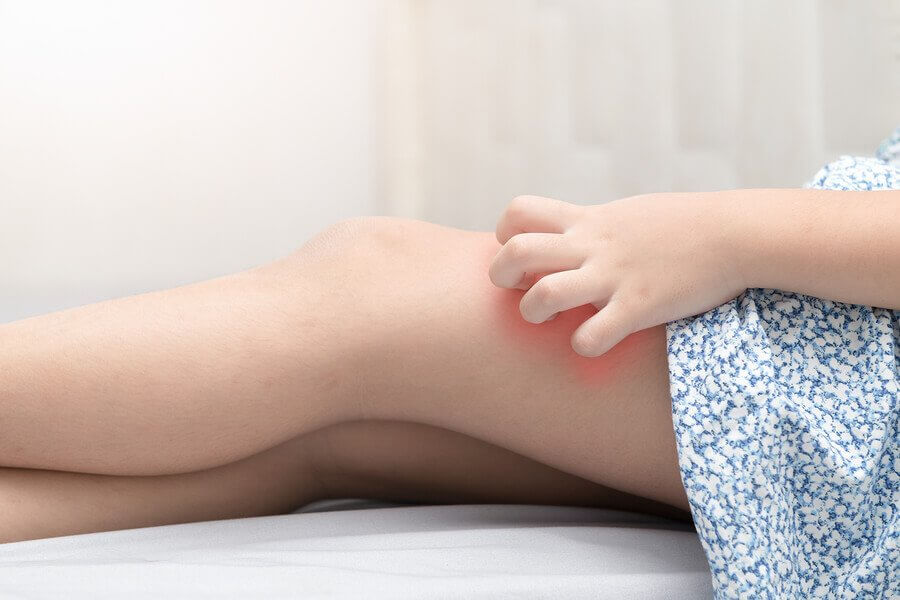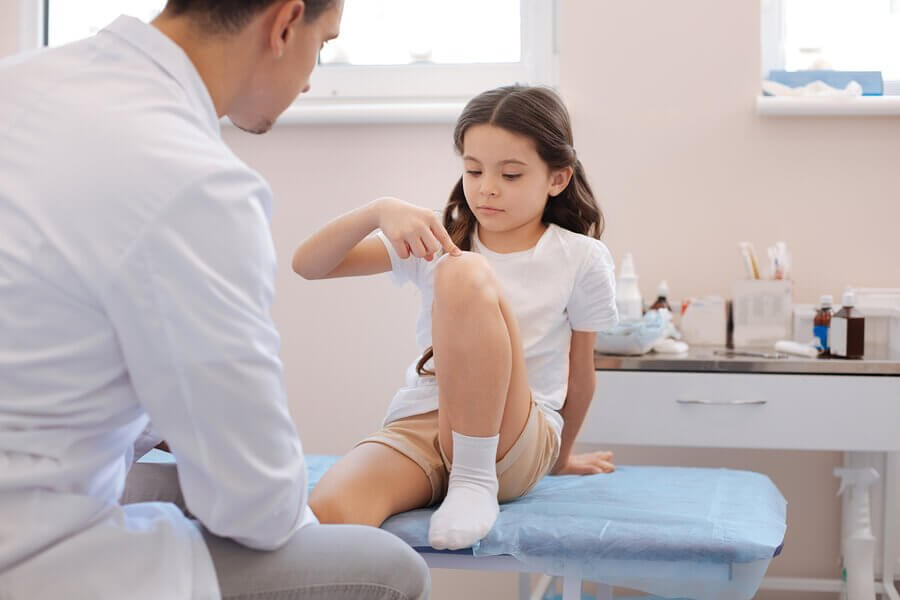Tips to Handle Growing Pains in Children

Growing pains in children are quite common. They usually occur in childhood, but can also occur in adolescence.
It’s a normal symptom that’s part of physical development. Therefore, it doesn’t involve any illness.
However, many parents worry when their children are uncomfortable or in pain. This is especially true because kids often feel growing pains at night when they aren’t moving as much.
While growing pains aren’t always obvious or intense, they’re more common than you might think. In general, it’s not necessary to go to the doctor. However, it’s important to pay attention to how your child reacts to them.
Growing pains in children

Growing pains usually occur in children’s extremities. This means that children might feel slightly uncomfortable in their arms and legs at certain times. However, these usually go away on their own.
Although every case is different, children usually experience this discomfort more frequently in two ages, which are:
- Between 3 and 5 years old
- Between 8 and 12 years old
What areas are most affected?
In general, the most common growing pains are in the lower extremities, like their legs, knees and calves.
Generally, this type of pain happens in their muscles, not their joints.
Now, what do their bones have to do with this? While children are going through growth spurts, their bones start to grow and cause tension in their muscles and tendons. This is what makes it feel like their bones hurt.
How to relieve growing pains in children
If children feel very uncomfortable or can’t sleep at night because of the pain, there are some steps you could take to alleviate it.
The best way to relieve growing pains is to give them a relaxing muscular massage to the area that bothers them the most. This will make them feel better, as well as help them relax.
This type of massage is always best to do in an ascending way. That is, start from their toes and work your way up to their head.
Another way to relieve pain is to teach your children how to do gentle stretches. Generally, low-impact physical activity helps kids forget about their discomfort or reduce it.
Another very useful technique is to apply a hot compress to the affected area. Of course, you should also give your children lots of hugs, caresses, and pampering so that they relax and stop paying attention to the pain.
Activities to reduce and prevent growing pains
Regular physical exercise is very beneficial – in fact, it helps reduce or prevent growing pains in children.
Activities such as running, jumping, climbing, and playing outside will help children distract themselves and forget about their discomfort.
However, sports or another structured physical activity is best. Not only does it help because it gives kids structure, but because there’s a trained instructor that corrects bad posture. In addition, the coach guides every action to prevent all kinds of injuries.

Do I need to call the doctor?
Although growing pains are very common, if you feel more comfortable and relaxed calling the pediatrician, do it. He’ll be the best person to give you the information and peace of mind that you need.
If the doctor says that your child should take painkillers (such as ibuprofen) or anti-inflammatories for recurrent and extreme discomfort, it’s important to follow his instructions. Make sure to follow the prescription and dosage exactly.
On the other hand, don’t forget that staying hydrated and following a balanced diet is always a good addition to any treatment.
The following symptoms are reasons to go to the doctor:
- Injury
- Weakness
- Pain and inflammation of a limb
- Inability to perform one or several activities
In short, these pains are normal and temporary. They don’t prevent children from going about their normal lives. If it does, you should consult your doctor as soon as possible. This is especially true if your child has any of these symptoms.
Growing pains in children are quite common. They usually occur in childhood, but can also occur in adolescence.
It’s a normal symptom that’s part of physical development. Therefore, it doesn’t involve any illness.
However, many parents worry when their children are uncomfortable or in pain. This is especially true because kids often feel growing pains at night when they aren’t moving as much.
While growing pains aren’t always obvious or intense, they’re more common than you might think. In general, it’s not necessary to go to the doctor. However, it’s important to pay attention to how your child reacts to them.
Growing pains in children

Growing pains usually occur in children’s extremities. This means that children might feel slightly uncomfortable in their arms and legs at certain times. However, these usually go away on their own.
Although every case is different, children usually experience this discomfort more frequently in two ages, which are:
- Between 3 and 5 years old
- Between 8 and 12 years old
What areas are most affected?
In general, the most common growing pains are in the lower extremities, like their legs, knees and calves.
Generally, this type of pain happens in their muscles, not their joints.
Now, what do their bones have to do with this? While children are going through growth spurts, their bones start to grow and cause tension in their muscles and tendons. This is what makes it feel like their bones hurt.
How to relieve growing pains in children
If children feel very uncomfortable or can’t sleep at night because of the pain, there are some steps you could take to alleviate it.
The best way to relieve growing pains is to give them a relaxing muscular massage to the area that bothers them the most. This will make them feel better, as well as help them relax.
This type of massage is always best to do in an ascending way. That is, start from their toes and work your way up to their head.
Another way to relieve pain is to teach your children how to do gentle stretches. Generally, low-impact physical activity helps kids forget about their discomfort or reduce it.
Another very useful technique is to apply a hot compress to the affected area. Of course, you should also give your children lots of hugs, caresses, and pampering so that they relax and stop paying attention to the pain.
Activities to reduce and prevent growing pains
Regular physical exercise is very beneficial – in fact, it helps reduce or prevent growing pains in children.
Activities such as running, jumping, climbing, and playing outside will help children distract themselves and forget about their discomfort.
However, sports or another structured physical activity is best. Not only does it help because it gives kids structure, but because there’s a trained instructor that corrects bad posture. In addition, the coach guides every action to prevent all kinds of injuries.

Do I need to call the doctor?
Although growing pains are very common, if you feel more comfortable and relaxed calling the pediatrician, do it. He’ll be the best person to give you the information and peace of mind that you need.
If the doctor says that your child should take painkillers (such as ibuprofen) or anti-inflammatories for recurrent and extreme discomfort, it’s important to follow his instructions. Make sure to follow the prescription and dosage exactly.
On the other hand, don’t forget that staying hydrated and following a balanced diet is always a good addition to any treatment.
The following symptoms are reasons to go to the doctor:
- Injury
- Weakness
- Pain and inflammation of a limb
- Inability to perform one or several activities
In short, these pains are normal and temporary. They don’t prevent children from going about their normal lives. If it does, you should consult your doctor as soon as possible. This is especially true if your child has any of these symptoms.
This text is provided for informational purposes only and does not replace consultation with a professional. If in doubt, consult your specialist.








